Chinese Customs:

The Chinese are a very superstitious people. Most
Chinese traditions and festivals seem centered around
appeasing spirits to prevent them from becoming
vengeful and inflicting cruel reprisals on the living.
Lives revolve around relationships with the spirit
world in general and their ancestors in particular.
Most festivals that we have had the opportunity to
experience are related to myths or the spirit world in
some respect; Adults and babies are adorned with jade bracelets
because jade is considered to promote health and welfare.
Horoscopes figure prominently and
auspicious dates, numbers, colors and signs are
closely noted and well considered in the planning and
execution of public and private events. (Flower
wreaths, the kind we associate with funerals, decorate
the outside of a business at its opening, displaying
notes of congratulations and best wishes.)
China's earliest deities were mythical creatures which
controlled nature. In Chinese religion now, Taoism,
Confusionism and Buddhism are inextricably entertwined
with ancestor worship and ancient animist beliefs and
form a cornerstone of life in Chinese housesholds.
Most temples are a combination of Buddhism and Taoism
and the worship of Animist deities. Taoism has gods
for every possible need and occasion; There is no
jealousy between gods, and the Chinese here believe in
taking advantage of all possible divine power.
Temples are everywhere, nestled into tiny areas under
stairwells, bridges and around rock formations.
Street and private alters abound around town as well,
and the smell of incense (or burning joss sticks) is a
clue that an alter is in close proximity. The smoke from the
joss sticks are believed to carry prayers to the spirit
world. We often see alters with burning joss sticks and
bowls of fruit sitting on sidewalks outside stores or other
businesses. Vendors outside temples often sell
artifacts of worship, such as joss sticks and fruit
for alter offerings.
There is no set time for prayer at the temples, and no
communal service except for funerals. Worshippers
come when they please to make offerings, pray for help
or give thanks. Temples are usually filled with
numerous depictions of various deities worshipped
there. In various temples, I have watched countless
people holding lit joss sticks between their clasped
hands and bow before an alter or a depiction of a
patron deity for their area of greatest concern
(safety, health, prosperity . . .).
While one might expect the reverence we see in western
houses of worship, I am continually surprised at the
noise and commotion I encounter in these temples,
though signs often request a respectful silence. I
have begun to gradually adjust to the notion that
Cantonese can only be spoken at 140 decibels and
attribute much of the commotion to the concept that in
a big city such as this no one really understands the
concept of silence. One notably exception to that was
the Chi Lin Nunnery, which was an oasis of silence in
a bustling city. The building complex was simple and
elegant, built around a peaceful and park-like central
courtyard, with fountains and lilly pads. The only
sounds were a melodic chanting in a steady male voice,
punctuated by high-pitched sweet ting of temple bells.
The central courtyard was surrounded by quiet rooms
for prayer where nuns with shaved heads in plain grey
robes thoughtfully arranged flowers or chatted
quietly.
The faithful also visit temples to learn their
fortunes; They discover their fortune by shaking a
cylindrical box called a Chim full of numbered sticks
that correspond to a fortune, which are then
interpreted by priests; - I remember as a child, one
of these cylindrical fortune boxes that my folks had
bought on a trip to Hong Kong offered me countless
hours of entertainment. - Or by how two small pieces
of irregularly shaped wood landed would indicate a
positive or negative response to a posed question. I
watched with curiousity as people tossed these small
pieces of wood to seek answers to their pressing
questions. The faithful can also light spirals of
joss, which are suspended from the ceiling and can
burn for 2 weeks.
The birthdays of several deities are celebrated
throughout town with great festivities: in particular,
Tin Hau, the queen of heaven and goddess of the sea
and patron goddess of fisherman. Legend has it that
Tin Hau was born in Fujian Province in 906 AD, and was
able to forecast the weather and save seafarers from
shipwrecks. Birthday celebrants pray for safety,
security, fine weather and full nets during the coming
year. There are over 70 Tin Hau Temples scattered
around Hong Kong, some in remote fishing villages and
many in what are now very urban areas. With so much
land reclamation, we find it amusing to find Tin Hau
temples tucked into the oddest of locations, knowing
they were once proudly standing along what was once
the waterfront. Tam Kung, is another patron of
Seafarers worshipped by local fisherman. The
predominance of seafaring deities indicates the
importance of seafaring and fishing here in Hong Kong.
These celebration festivals usually include lion and
dragon dance parades that feature models of the
deities being paraded through the streets, followed by
a dragon dance, complete with drums, bells and cymbals
clanging. We have noticed that the general public
seems to be welcome to join the parade at any point.
Chinese operas often commemorate the event as well. We
have watched with wonder as a bamboo and tin structure
is built completely from scratch in what is normally a
parking lot within a matter of days. Communities
build these structures to host Chinese operas for the
local community but appeasing the local spirits
figures in these festivals as well.
The Cheung Chau Bun Festival, on the island of Cheung
Chau, is a ceremony to appease the ghosts of people
who were killed by pirates and to commemorate being
saved by a plague 200 years ago. The island was once
known for piracy and smuggling. Children are dressed
a mythological creatures and paraded aloft above the
streets, cleverly strapped to metal supports hidden
under their clothes so they appear to be floating
above the heads of the crowd. We were surprised to
read somewhere that the young children are drugged to
keep them still for such a long period of time! The
festival gets its name from tall towers that are
covered in sweet buns for the duration of the
festival. In addition to the parade, the festival
also features ceremonies honoring several deities
significant to people who earn their living from the
sea, Chinese opera perfomances, a fasting period, lion
and unicorn dances, Chinese acrobatic performances,
and concludes with a contested scramble up these bun
towers to grab as many lucky buns from the top as
possible. We joined in the festivities, though found
the crowds a bit overwhelming.
The Mid Autumn Lantern festival celebrates the harvest
moon. Families gather with paper or cloth lanterns
lit from the inside and glow sticks on the night of
the full moon. Lanterns in the shape of animals,
mythological creatures and trinkets were available for
sale at many stores the weeks leading up to the
festival. (We even saw people carrying plastic
inflatable toys with a led light stuffed inside!) We
enjoyed the festivities in Victoria Park, where a
virtual carnival was set up, with Chinese Opera,
Chinese instruments and dancing on different stages,
palm reading, games and riddles, and, of course, lit
lanterns everywhere of all shapes and sizes, from huge
figurines in the park to tiny trinkets on a stick
carried by people in the crowd. The lit lanterns were
mesmerizing in the the darkness against the backdrop
of the full moon. And the carnival atmosphere made it
an exciting event and gathering of large crowds.
We enjoyed watching the excited little tots decorated
in glow sticks and trailing lanterns of various shapes
and sizes and seeing families celebrating together.
Families worked together to make glow stick sculptures
of impressive proportions. The Lantern festival also
commemorates a 14th century uprising against the
Mongols, when plans for revolution were passed around
inside Mooncakes. Mooncakes are the fruit cake of
China, everyone exchanges them at this time of year,
though not everyone likes them. Numerous recipes
attempt to revive their appeal, with fillings such as
coconut, dates, nuts, lotus, sesame seeds, and often a
duck egg in the center in honor of the full moon.
Locations for observing the full moon were duly noted
and families made an effort to do just that on that
day.

The Chinese are incorrigeable gamblers. (We hear ads
for help with compulsive gambling playing on the
radio.) Horse racing is huge in Hong Kong and there
are several racecourses in the area. The Hong Kong
jockey club is a very powerful organisation and is
usuall listed as a major donor for charitable works.
To put things in perspective on priorities in Hong
Kong's history, the first official race meeting was in
1846 (on government appropriated land), while St.
John's Cathedral wasn't constructed until 1849 and
land was not granted to build schools until 1873! The
Jockey Club began to admit Chinese members in 1926
(after some helped settle a huge strike). I read that
the largest horse-owner at that time was Eu Tong-sen,
the noted herbal medicine man from Malaya who was a
legend in Hong Kong as the builder/owner of several
European style castles. The castles are all gone now,
but the herbal medicines shops (Eu Yan Sang) he
founded are still in business everywhere - and is the
same company where we took a Chinese Medicine class.
The Chinese Medicine class was an eye opening
experience, especially seeing the displays in the shop
of cures for various ailments in their original form.
How much is science and how much is superstition one
can only guess, though there is a strict testing
regime established for approving these ingredients. I
understand one can go to a Chinese medecine shop and
tell them what ails you and you can depart with a
mixture of dried ingredients to boil in a tea.
Fortunately, we haven't had the need.
Feng Shui (pronounced "fung soi") literally means
"wind and water" and attempts to mirror the flow or
the natural balance of nature, of Yin and Yang.
Again how much of Feng Shui is science and how much is
myth, superstition, or art is hard to say, though it
has become popular in the west in recent years to
determine the layout of a building and placement of
furniture. We attended a class taught by a Feng Shui
Master and learned some techniques for remodelling to
enhance or diffuse the different natural
characteristics of a property and the various forces
posed by each year. 2006 is the year of the dog and
2007 is the year of the pig and each present a set of
opportunities and challenges. Each year the number
combination changes its geographical location relative
to North and certain numbers are auspicious for
different things. For example, to improve your sex
life, you might move the bed headboard to a different
location in the house or if that's not possible to a
different location within a room. Or given complete
remodelling or moving is undesireable, people use
objects and colors to remedy these imbalances. A feng
shui book can surely explain this much better than I
could, but that's what I got from attending a hourlong
feng shui class!
The superstitions extend into all aspects of life. I
read an intriguing book about a British missionary
woman who set up a home for abandoned children in the
1930's and rescued babies who had been abandoned often
for reasons related to mere superstition. Here's a
little of what I learned from the book that I found
interesting: In many Chinese homes, the ancestral
tablets hang in the place of honour. Incense and joss
sticks are burned at the foot of the tablet which is
believed to have been entered by the spirit of the
revered dead. And if there is no tablet, the spirit
may wander homeless and might become one of the hungry
ghosts. This is an unthinkable fate for a late member
of a Chinese family, so it is essential that all their
needs are met, including money for them to use in the
spirit world. Special counterfeit paper money, paper
clothes, paper trunks to keep them in, the newest type
of car, and all sorts of amenities in model are
printed for burning before the ancestral shrine to
appease these spirits. At certain times of year,
feasts are laid before the spirits of the ancestors
for them to feast upon. Joss sticks burn at either
end of the well laden board. Sons of the family lead
the invitation for the spirits to partake in the
repast. It is believed that the spirits partake of
the essence of the food so the family can enjoy the
remnants left at the end of the day. This is perhaps
one reason why Chinese are so anxious to produce sons.
Historically Chinese newborns were abandoned if their
births coincided with what was considered an ill omen.
Disasters, accidents, loss of money or belongings -
almost any type of ill-fortune could be attirbuted to
the innocent newborn babe. The illness of a distant
relative could could cause an infant to be considered
to be posessed by evil spirits. Superstitions were
many and varied: if the lines on a girls hands ran
parallel from side to side, she might cause her
father's death. Girls especially were unwanted. If
there were sufficient daughters to undertake the work
at hand, many families were unwilling to feed one
more. The fact that a girl arrived instead of a boy
showed the spirits were angry. Twins were considered
bad luck and were destined to be abandoned. And of
course any physical deformity would automatically
disqualify an infant from life with the family. In
some parts of old China, special towers were built
outside the city walls, where unwanted offspring could
be abandoned on the window's edge. As new bundles
arrived, already abandoned ones would be pushed over
the edge. Hard to imagine such cruelty these days,
although note that most children offered for adoption
are almost universally girls. (Rumor has it that
children are getting kidnapped in China to feed this
demand for adopted babies, though I have no idea if
there is any truth in it.)
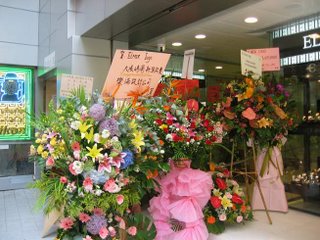

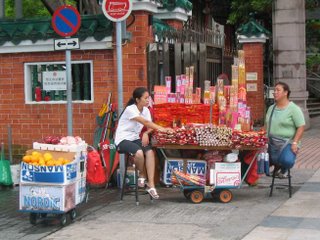
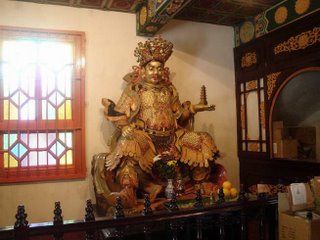
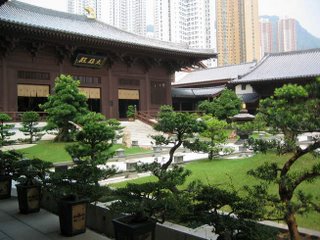
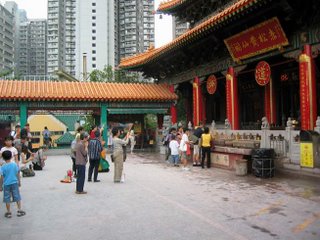
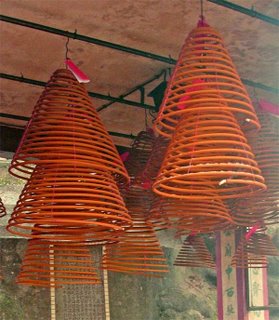
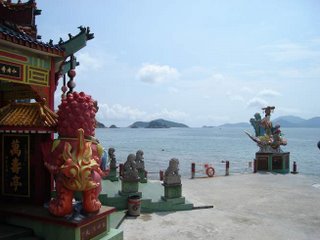

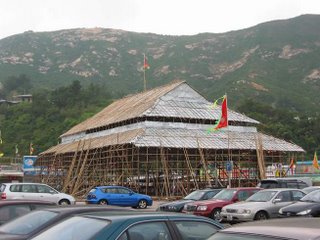
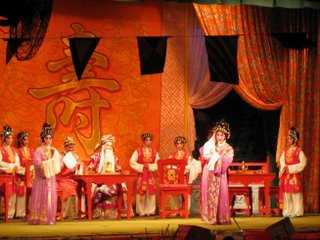
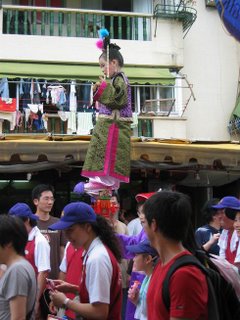

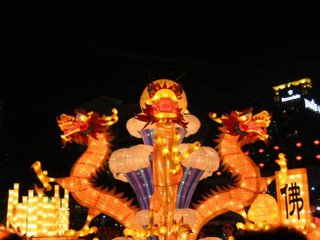

<< Home